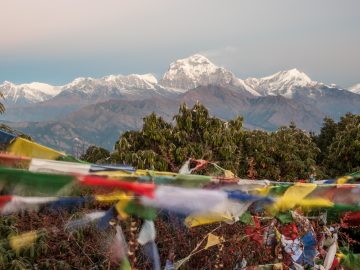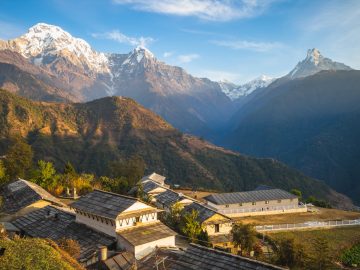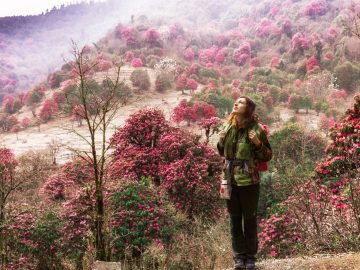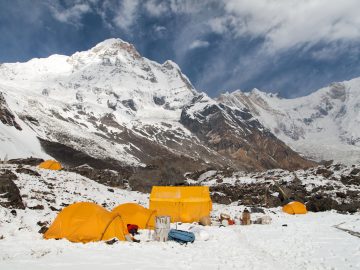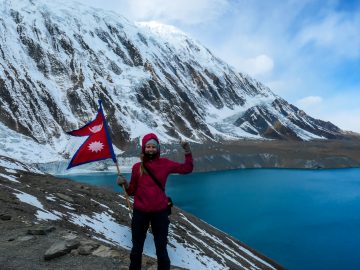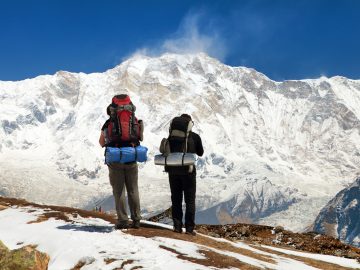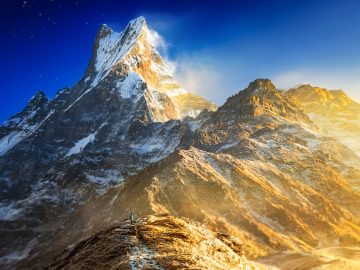Annapurna Trekking
“We travel, some of us forever, to seek other states, other lives, other souls.”
Annapurna Trekking is one of the most celebrated and popular trekking trails by trekkers from around the world. With outstanding scenery of the majestic Himalayas along with floral and faunal diversity, Annapurna trekking region remains and is becoming increasingly popular. Challenging trails and colossal mountains, exciting range of climatic zones, lush valleys and villages with unique way of living, gorges and passes, colorful forests, pristine lakes and glittering glaciers, torrential rivers and breathtaking sunrise, sunsets and natural sanctuaries enriched with rare species in it and exceptional hospitality of the locals makes the Annapurna region a perfect trekking destination.
What to expect during the Trekking?
Words are insufficient to describe the spectacular Annapurna region. Annapurna trekking introduces the trekkers to a myriad of natural, cultural and ecological magnificence that amazes the trekkers and climbers alike.
Annapurna Massif and other sibling peaks and its amazing views
Whatever the trekking route chosen by the trekkers, the star attraction of the Annapurna Trekking is the magnificent Annapurna range. The highest among them is the Annapurna I (8,091m) followed by the colossal Annapurna II (7,937m), Annapurna III (7,555m), Annapurna South (7,219m) along with the other neighboring peaks such as Lamjung Himal (6,983m), Machapuchare or the Fishtail Mountain (6,997m), Mardi Himal (5,553m), Gagapurna mountain (7,454m), Khangsar Kang mountain (7,485m) and several other snow-clad peaks. These offer a breathtaking view of these lofty peaks that also provide life-support sources for the vegetation, wildlife and human life alike.
Pristine Rivers, Lakes and Glaciers
Besides the sky-reaching mountain peaks, the pristine lakes and Glaciers adorn the Annapurna Trekking region. The highest lake of Tilicho (4,919m) is one of the famed and beautiful lakes in the Annapurna region. Apart from this the region has glaciers. To name the few are the North Annapurna Glacier, South Annapurna Glacier and East Annapurna Glacier that are the sources to the alpine vegetation and other rocks and minerals deposits. The torrential Kali Gandaki River and the mighty Marshyangdi river flow along the trekking trails in the region below the arid trails of Mustang. These rivers, lakes and glaciers help the greenery and the lushness of the region be maintained.
Diverse flora and fauna
The trekking of Annapurna region means that trekkers can explore a range of vegetation on the trail. The initial days of trekking provides to us the lush valleys of the hills and terraced fields that are in the foothills of the Himalayas. The trekking route then moves into the subtropical forests which go on to the alpine climatic vegetation marked by pine, spruce and juniper trees along with similar vegetations. The regions of Manang and Mustang lie to the other end of the Annapurna massif making it a rain shadow area. The arid and barren or desert-like climatic condition results in the bushes. This region is a haven to the orchid and rhododendron, 100 different types of wildlife including the rare snow leopard and blue sheep, around 478 species of birds including the multicolored Oimpheyanm Koklas and blood pheasants along with 39 species of reptiles and 22 species of amphibians. The gorge of Kali Gandaki and the conservation area of Annapurna Conservation Area preserve this diversity of vegetation and wildlife found in the region.
Cultural and architectural heritages
The trekking trail in this region is dotted with the Hindu and Buddhist cultural and architectural masterpieces that personify the faith of these religions. Muktinath temple presents the blend of both the religion. It is revered as Lord Vishnu by the Hindu and as Avalokiteshwara by the Buddhists. The temples and monasteries exist in perfect harmony in this region. Among the other region of the Annapurna Trekking trail there are several gompas, Mani walls and monasteries that reflect the Buddhist teachings and radiate the faith. Prayer wheels and fluttering prayer flags, metal statues of deities, natural flame in the Buddhist monastery revered as the Goddess of Fire by the Hindus and the 900-year-old Branga Gompa makes the trekking experience in Annapurna region an enriched one. The ancient festival of Badhe, celebrated once every three years, in the Manang, Nar and Sampang village of Mustang is an important cultural heritage of the region along with the Dashain, Tihar and other Hindu festivals celebrated in the Hindu dominated areas of the region.
Unique lifestyle of the locals
The region of Annapurna also is home to the several indigenous communities and their unique culture and lifestyle. The communities of Magar, Gurung, Chettri, Brahman, Thakali, Tibetan, Manangi and other several ethnic and occupational groups with their own cultural and religious patterns and expressions. The locals of Manang have a long history of entrepreneurial engagement resulting in the influence of foreign culture in their traditional cultural values. Villages in the rural setting days away by roads from the nearing town develop their own style of living life, getting the best out of their nearby surrounding. This shall be an interesting observation for the tourists.
Other Highlights
Besides the above mentioned highlights of the Annapurna Trekking experience has in store the amazing view of sunrise and sunset from the Poonhill and several other viewpoints, the deepest gorge of the Kali Gandaki, the popular hot springs in Jhinu and Tatopani, suspension bridges connecting the high hills, museums that displays the traditions, lifestyle and historically significant events along with the local cuisines and beverages are other interesting elements of Annapurna Trekking experience.
